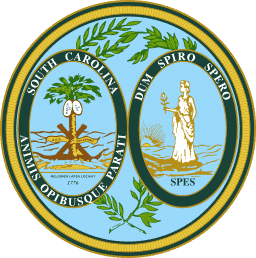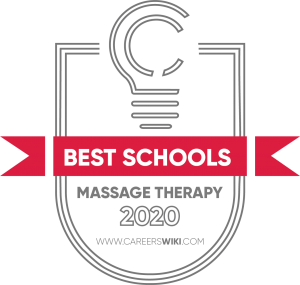…
There are five massage therapy schools in South Carolina, including public and private institutes and colleges. Some focus exclusively on massage therapy, while others offer multiple programs.
Most institutions award certificates that take a year or less of full-time study to earn. Some have two-year associate’s degree programs. Students spend most of their time in classrooms and labs, and also gain experience in clinical settings.
South Carolina massage therapists earn salaries and wages comparable to the national average. The future is promising, with officials predicting about 500 annual job opportunities in the state during the 10 years that end in 2026.
View massage therapy schools in other states.

This government agency is a division of the state Department of Labor, Licensing and Regulation. The department’s mission is “to promote the health, safety and economic well-being of the public through regulation, licensing, enforcement, training and education.”
The MT panel enforces the South Carolina Massage Therapy Act. It establishes licensure criteria, issues licenses, and ensures that therapists periodically renew their licenses and receive continuing education. The agency approves schools that meet standards regarding curricula.
The panel receives and investigates complaints of alleged violations of state laws and regulations. It submits license applicants and practitioners to drug tests, or other physical or mental assessments, when there are “reasonable grounds” to do so.
To become a massage therapist in South Carolina, it is necessary to begin by earning either a high school diploma or a GED. Then, a student needs to attend a postsecondary school with accreditation that offers an MT program the state authorities have approved.
The program has to consist of at least 500 content hours of instruction and practice. Courses are to cover anatomy and physiology, kinesiology pathology, basic massage techniques, business skills, hygiene, and laws and ethics.
Many curricula exceed the minimum requirements. Programs differ in the number and types of massage methods they teach. Some focus on medical massage; others on spa treatments. A curriculum’s hands-on component may be at an on-campus student clinic or in an externship at a massage facility in the community.
After graduating, a prospective practitioner must contact the state panel for a license. Officials require an applicant be at least 18 years of age, submit a transcript from an approved school, and post an acceptable score on the Massage and Bodywork Licensing Examination (MBLEx).
The Federation of State Massage Therapy Boards administers the test, charging an application fee of about $200. Pearson VUE offers the computer-based exam frequently at testing centers, and sends the results to the panel.
The renewal of a license is required every other year. This entails a fee of about $175. Another requirement is to take at least 12 continuing education hours between each renewal period, beginning with the second renewal. The panel accepts classes provided by recognized national associations or state-approved schools.
We selected the schools below based on the programs that they offer, accreditation, student population, graduation rate and reputation.
View our Ranking Methodology to learn more about how we rank schools.

66%
133
This is a private medical training school with campuses in Charleston and Columbia. It offers small class sizes, industry-experienced faculty, career-placement services, and day or evening classes.
The Professional Clinical Massage Therapy certificate program involves 900 clock hours. The curriculum includes 700 hours of classes in massage and neuromuscular therapy. Students spend 100 hours at an on-campus clinic, where they administer treatments to real clients.
Program applicants take a pre-admission exam. The school accepts some of those who fail to post “appropriate” scores. Those students must submit a resume, write an appeal letter, and do an interview.
14%
3550
This public community college in Sumter awards a massage therapy certificate that takes 12 months of full-time day classes to earn. The hospital-based program provides acute-care training.
A pre-acceptance requirement is completing developmental courses. Massage therapy classes begin in January and August. Students study the state-mandated subjects, and administer one-hour massages to the public at an on-campus clinic.
Those enrolled in the 960-clock-hour program also may pursue a specialty certificate in massage therapy for integrative healthcare — the first of its kind in the United States — which the National Certification Board for Therapeutic Massage and Bodywork recognizes.
54%
1342
A branch campus of the privately owned Platt College in Tulsa, Oklahoma, MMT traces its history to 1916.
The 710-clock-hour massage therapy program lasts eight months. In addition to the required coursework, students take Somatic Psychology and Hydrotherapy & Aromatherapy. They learn Swedish, deep tissue, trigger point, prenatal, and geriatric massage techniques, as well as neuromuscular therapy. The curriculum includes three ` ` stints at the school’s teaching clinic.
Applicants must take a learning readiness test “to determine the type of support” they would need if admitted to the program.
18%
4534
This public school primarily serves residents of Spartanburg, Cherokee, and Union counties in upstate South Carolina.
The therapeutic massage program focuses on Swedish and basic massage techniques, while providing the state-required courses. The 31-credit curriculum consists of three terms over 42 weeks, beginning in the fall. On-campus and area clinics provide opportunities for hands-on experience.
Students may continue their education by pursuing massage therapy associate in applied science degree. They must take additional classes in composition, communications, human relations, public speaking, mathematics, quantitative reasoning, art and music, humanities, early Christian and Jewish history and literature, world religions, and computers.
$19.7
$41,000
22%
The median annual pay for a South Carolina practitioner is just short of $41,000 a year or about $19.70 per hour—a bit less than the U.S. average of over $41,400 or approximately $20.
The state’s most financially successful 10 percent receive almost $59,900 or $29, not as much as the U.S. median of about $78,300 or $37.65.. The 10 percent earning the least money get $20,600 or about $10 in South Carolina, and over $21,300 or around $10.25 nationally.
The number of massage therapists here totaled 3,710 in 2016. Based on projections by the federal government’s Bureau of Labor Statistics, there will be 4,540 jobs by 2026. That would be a 22 percent expansion, close to the agency’s predicted 26 percent nationwide.
Sources: U.S. Bureau of Labor Statistics, CareerOneStop

LIMITED TIME DEAL